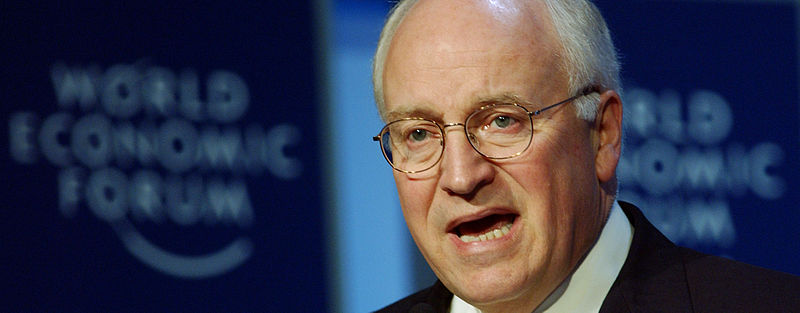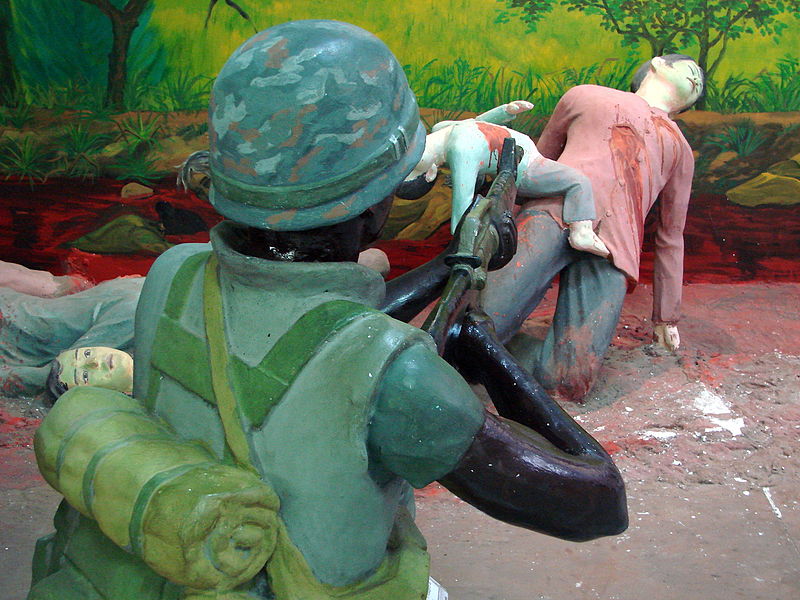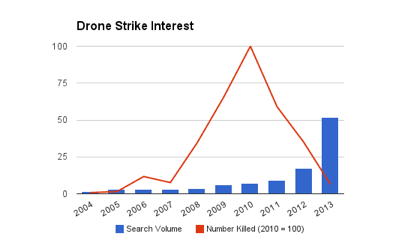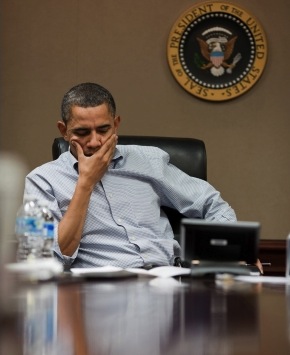
The Bush administration’s primary justification for launching the Iraq War is thought, probably correctly, to be an alleged WMD program that did not exist. The coterie of delusional neoconservatives surrounding Bush and Cheney contributed to a systematic process of cherry-picking dubious intelligence and outright manipulation of evidence in order to satisfy a political decision that had already been made to change the regime in Iraq through a war of aggression.
The historical record pretty clearly demonstrates the distortions the administration employed to make the case that Saddam Hussein had WMDs. Inspectors who said they didn’t exist were ignored, false stories about aluminum tubes and yellowcake from Africa were peddled assertively, Iraqi defectors that were known liars were used as anonymous sources alleging Saddam’s WMD development, etc.
The plan eventually worked. The administration’s expressed certainty was persuasive to Americans. “Simply stated, there is no doubt that Saddam Hussein now has weapons of mass destruction,” Dick Cheney said in a 2002 speech. “There is no doubt he is amassing them to use against our friends, against our allies, and against us.” No doubt.
But as central as these false claims about Saddam’s WMDs were to the propaganda campaign for war, I believe what will be most remembered is the claim of an operational connection between Saddam Hussein and al-Qaeda.
Significant portions of Americans still believe that Saddam and al-Qaeda were in cahoots and cooperated in the 9/11 attacks. The reason is simple: the administration told them this lie.
An investigation by a committee in the House of Representatives in 2004 identified “237 misleading statements about the threat posed by Iraq that were made by President Bush, Vice President Cheney, Secretary Rumsfeld, Secretary Powell, and National Security Advisor Rice. These statements were made in 125 separate appearances, consisting of 40 speeches, 26 press conferences and briefings, 53 interviews, 4 written statements, and 2 congressional testimonies.” According to the committee, at least 61 separate statements “misrepresented Iraq’s ties to al-Qaeda.” A Senate investigation in 2006 also covered these lies.
Keeping this lie afloat took some work. The Bush administration, primarily Dick Cheney and Don Rumsfeld, “applied relentless pressure on interrogators to use harsh methods on detainees in part to find evidence of cooperation between al Qaida and the late Iraqi dictator Saddam Hussein’s regime,” McClatchy reported in 2009.
According to Lawrence Wilkerson, chief of staff to Bush’s Secretary of State Powell, “the administration authorized harsh interrogation” in 2002, and “its principal priority for intelligence was not aimed at pre-empting another terrorist attack on the U.S. but discovering a smoking gun linking Iraq and al-Qa’ida.”
Ibn al-Shaykh al-Libi, the detainee captured in Afghanistan in November 2001, eventually provided that smoking gun. He claimed knowledge of an Iraq-Qaeda connection because it was tortured out of him. The Bush administration cited it as evidence for the Iraq War’s greatest lie.
Other lies were told to this effect. Two months after the 9/11 attacks, on December 9, 2001, Dick Cheney went on Meet the Press and, when asked by Tim Russert whether “Iraq was involved in September 11,” mentioned a “report that’s been pretty well confirmed, that [9/11 hijacker Mohammed Atta] did go to Prague and he did meet with a senior official of the Iraqi intelligence service in Czechoslovakia last April, several months before the attack.”
In fact, the CIA had told Cheney this report was false a day before his Meet the Press appearance. In a briefing that was sent to the White House Situation Room, the CIA concluded that “11 September 2001 hijacker Mohamed Atta did not travel to the Czech Republic on 31 May 2000.” Cheney cited it anyways.
Two years later, on September 14, 2003, Cheney appeared once again on Meet the Press. Russert asked him if he was “surprised” by the fact that “69 percent” of Americans believe Saddam “was involved in the September 11 attacks.”
“I think it’s not surprising that people make that connection,” Cheney said. “With respect to 9/11, of course, we’ve had the story that’s been public out there. The Czechs alleged that Mohamed Atta, the lead attacker, met in Prague with a senior Iraqi intelligence official five months before the attack, but we’ve never been able to develop anymore of that yet either in terms of confirming it or discrediting it.” In reality, it had been conclusively discredited years earlier.
As Paul Pillar, former CIA analyst and National Intelligence Officer for the Near East and South Asia, wrote in his recent book: “The supposed alliance between Saddam’s regime and al-Qa’ida clearly did not drive the Bush administration’s decision to launch the war [in Iraq] because the administration was receiving no indications that any such alliance existed,” adding that “this fact did not stop the administration from nonetheless promoting publicly the notion of such an alliance.”
By August 2003, after another year that included the most intensive selling of the war, more than two-thirds of Americans thought Saddam had been involved in 9/11. Some of this belief was due to innuendo such as the vice president’s repeated references to a phantom meeting in Prague between an Iraqi and 9/11 hijacker Mohammed Atta. It was due mostly to the administration’s rhetorical drumbeat that repeatedly mentioned Iraq, 9/11, and “war on terror” in the same breath.
Pillar is right: the Saddam-Qaeda connection did not drive the Bush administration’s decision to go to war with Iraq. But it did drive the administration’s propaganda campaign to generate public support for the war.
This was absolutely critical to the blank check that the vast majority of Americans gave to Bush and Cheney to go to war. Alleged WMDs, I think, could never have achieved the level of popular support for war crimes against Iraq on its own. The pain and indignation Americans felt after being attacked on 9/11 needed to be exploited for a war of choice as brazen as Iraq to gain support. And the record is clear that the Bush administration fostered this deception, employing torture and citing false intelligence to do so.
The record is clear, but the CIA is still trying to cover it up, as Marcy Wheeler has recently noted.
Many lies were told to justify the Iraq War. But none were as baseless and vital as this one. At the risk of joining the parade of idiots predicting “the judgement of history” on Iraq, I would anticipate the Saddam-Qaeda connection lie as the most important, far surpassing the more popularized WMD claims.







 It’s true that Obama has sent
It’s true that Obama has sent 